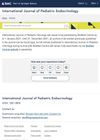New Biomarkers to Evaluate Hyperandrogenemic Women and Hypogonadal Men
January 2018
in “
Advances in Clinical Chemistry
”
hyperandrogenemia hirsutism alopecia PCOS hypogonadism testosterone sperm count Leydig cell function Sertoli cell function semen analysis genetic markers RNA markers metabolic markers microbiome markers muscle mass markers serum testosterone liquid chromatography-tandem mass spectrometry LC-MS/MS anti-Müllerian hormone AMH irisin polycystic ovary syndrome

TLDR The document concludes that hormonal biomarkers are key for diagnosing hyperandrogenemia in women and hypogonadism in men.
The document from January 1, 2018, reviews biomarkers for diagnosing hyperandrogenemia in women and hypogonadism in men. It discusses the clinical relevance of hyperandrogenemia, which can lead to conditions like hirsutism, alopecia, and PCOS in women, and the importance of considering factors such as age, obesity, and metabolic health when interpreting hormone measurements. For men, hypogonadism is characterized by low testosterone and/or sperm count and can lead to symptoms like decreased libido and muscle mass. The prevalence of hypogonadism in men ranges from 2.1% to 12.8%, increasing with age. Biomarkers for hypogonadism include hormonal, Leydig and Sertoli cell function, semen, genetic/RNA, metabolic, microbiome, and muscle mass-related markers. The document emphasizes the importance of accurate serum testosterone measurement, with liquid chromatography-tandem mass spectrometry (LC-MS/MS) being the most accurate method. It also discusses the use of anti-Müllerian hormone (AMH) for diagnosing PCOS in women, with levels >5 ng/mL being indicative, and the potential of new biomarkers like irisin for evaluating muscle mass in hypogonadal men. The review concludes by summarizing the current state of biomarkers for diagnosing hypogonadism, with hormonal biomarkers being the most commonly used for diagnosis. The document does not provide specific study sizes or detailed results but discusses the general utility and interpretation of these biomarkers in clinical practice.











